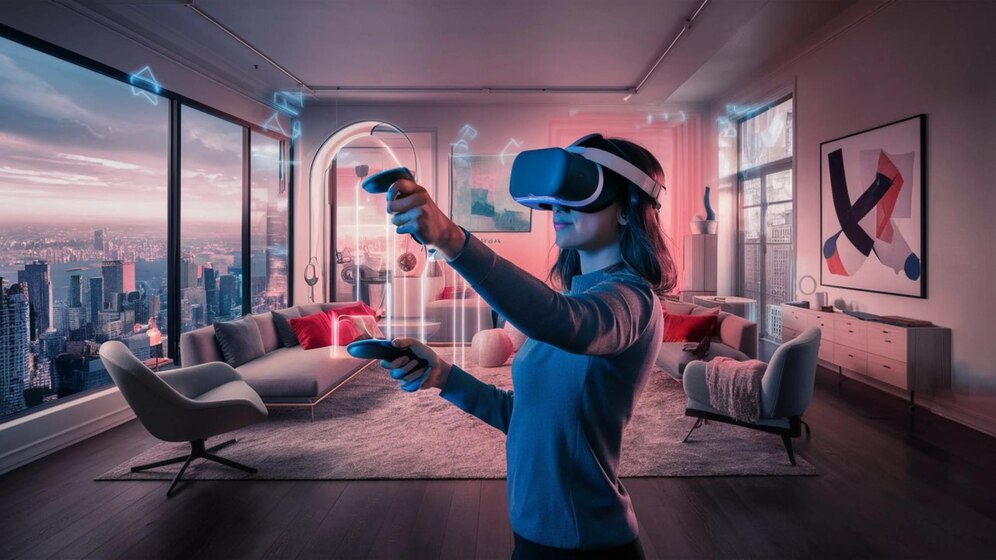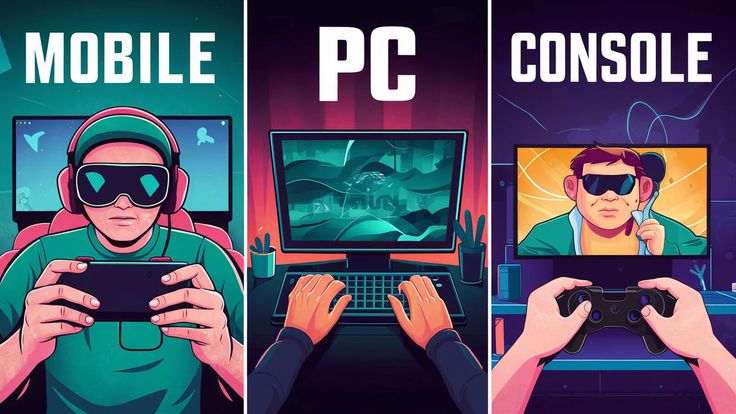Top AR VR Trends in 2025 that you should Keep an eye on
AR and VR technologies continue to advance at a rapid pace so they transform both business operations and customer interactions across the world. Future interactions between humans and digital and physical domains will be transformed through technological developments leading up to 2025. The following list presents upcoming AR VR trends for 2025. 1. Enhanced AR VR in the Metaverse The Metaverse development relies heavily on AR VR technologies because they represent its core conceptual elements. Metaverse development by Meta Microsoft Apple and other major corporations involves substantial investment toward building virtual spaces in which users can do work play and mingle with others People using AR VR headsets with enhanced haptic capabilities will achieve realistic digital world interactions. The implementation of artificial intelligence (AI) creates superior user connections that increase the responsiveness and dynamics of virtual environments. The Metaverse growth will persist throughout 2025 as more organizations embrace AR VR solutions to develop better connections with their clients and maintain remote cooperation. Businesses along with individuals will find AR VR capabilities in Metaverse becoming mandatory elements that advance daily operations and work activities. Developers working to eliminate disruptions in technology interaction will generate progressive changes to human-machine relationships. 2. AR VR in Healthcare AR VR technology shows its greatest potential for healthcare applications when we reach 2025. These technological innovations deliver substantial changes to diagnosis and treatment practices in medical settings from training to direct patient healthcare services. AR VR assists surgeons during preoperative planning and simulation activities because they can rehearse complicated procedures in risk-free conditions. Through AR assistance surgeons obtain enhanced accuracy and decreased procedural risks by placing digital data over patient bodies. Tenants receive multiple therapeutic advantages from virtual reality approaches that help with pain relief mental wellness treatments and bodily recovery. The healthcare field forecasts increased adoption of AR VR technology because it delivers both economical and innovative answers to medical institutions. The healthcare industry will experience a transformation due to AR VR because these technologies enhance training methods and improve patient care results. 3. 5G-Enabled AR VR Experiences The development of 5G networks makes AR VR experiences more simple to access and use. Virtual environment interactions become more immediate because low-latency high-speed connections allow real-time interactions which improves application quality in remote work and gaming along with virtual tourism. 5G technology optimizes cloud-based AR VR solutions by freeing them from heavy hardware requirements thus enabling compact and mobile AR VR encounters. Users obtain uninterrupted and premium-quality AR VR content through their smartphones along with AR glasses and standalone headsets. Telecom industry growth of their 5G infrastructure worldwide will drive higher adoption rates of AR and VR products across different business sectors. The 5G infrastructure will enable organizations in education and retail to integrate AR VR solutions for improving user experiences and operation efficiency. 4. AI-Powered AR VR The development of AR VR technologies receives essential support from artificial intelligence technology systems. The implementation of AI algorithms in AR VR systems enables these solutions to deliver tailored interactive virtual environments that learn from user interaction. Artificial intelligence powers enhanced interactions with non-playable characters by making them seem more genuine and reactive in digital games. Users throughout retail shops gain the ability to experience virtual dressing, modify, and get product recommendations through AI-driven augmented reality software. AI virtual assistants in professional settings deliver current data and information that enhances worker productivity at the workplace. AI systems are improving every day which enhances the natural feel and easy usage of AR VR experiences. Businesses together with developers use AI capabilities to develop interactive AR VR applications that satisfy user requirements. Contact us for more details. Frequently Asked Questions (FAQs) 1. What will AR VR technologies do to daily life during the year 2025? AR VR technology will transform how people live their lives through advancements that will improve all aspects of communication and entertainment along with work activities. Improved technological devices and expanded Metaverse development will enable users to conduct virtual meetings and experience immersive gameplay and interactive social activities in ways that were previously impossible. Various parts of our daily lives will adopt AR VR technology which will boost both their efficiency and engagement levels in modern times. 2. In what ways will the most profit arise from AR VR technologies in 2025 industry-wise? The technological progress of AR VR in 2025 will positively impact healthcare services together with education systems gaming markets retail operations and real estate industry operations. Professional healthcare providers will implement AR VR technology to deliver remote surgical procedures along with professional training to their medical teams. Students will benefit from virtual educational sessions. By using AR VR applications retail and real estate businesses will deliver virtual shopping and property viewing systems that enhance customer interactions. 3. AI will boost the quality of AR VR experiences by what means? AI functions will improve AR VR through adaptive and personalized virtual environment development. Users will achieve improved interactions through AI-powered AR VR systems because the technology delivers instant advice while developing game characters more realistically and building more realistic simulation environments. AI enables automation in AR VR content development which simplifies business application creation processes. 4. 5G technology will shape the future development of AR VR alongside other crucial factors. The implementation of 5G networks will support AR VR functions through its ability to produce fast connections with minimal latency and enhance immediate interactions. The deployment of 5G networks enables users to interact without interruption through AR and VR which enhances their access to cloud gaming virtual tourism and remote collaboration services. The widespread adoption of AR VR technologies will occur through different business sectors to provide enhanced user experiences. 5. The price of AR VR headsets is showing signs of becoming more affordable. The market price of AR VR headsets is reduced due to increasing technological capabilities and declining production expenses. The market develops inexpensive and lightweight AR VR devices to expand its consumer base. The increased competition within this market segment










